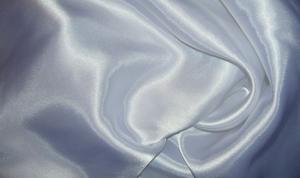High-tech opportunities of lab-produced silk
Tougher than a bullet-proof vest yet synonymous with beauty and luxury, silk fibers are a masterpiece of nature whose remarkable properties have yet to be fully replicated in the laboratory; thanks to their amazing mechanical properties as well as their looks, silk fibers have been important materials in textiles, medical sutures, and even armor for 5,000 years; Tufts researchers are getting close to producing silk in the lab

Widely known for its luxury and beauty, silk has a long and continuing history of use in armor // Source: lovetoknow.com
Tougher than a bullet-proof vest yet synonymous with beauty and luxury, silk fibers are a masterpiece of nature whose remarkable properties have yet to be fully replicated in the laboratory. Thanks to their amazing mechanical properties as well as their looks, silk fibers have been important materials in textiles, medical sutures, and even armor for 5,000 years.
Silk spun by spiders and silk worms combines high strength and extensibility. This one-two punch is unmatched by synthetics, even though silk is made from a relatively simple protein processed from water.
In recent years scientists have begun to unravel the secrets of silk. In the 30 July 2010 issue of the journal Science, Tufts biomedical engineering researchers Fiorenzo Omenetto and David Kaplan report that “Silk-based materials have been transformed in just the past decade from the commodity textile world to a growing web of applications in more high technology directions.”
Fundamental discoveries into how silk fibers are made have shown that chemistry, molecular biology, and biophysics all play a role in the process. These discoveries have provided the basis for a new generation of applications for silk materials, from medical devices and drug delivery to electronics.
The Science paper notes that the development of silk hydrogels, films, fibers, and sponges is making possible advances in photonics and optics, nanotechnology, electronics, adhesives, and microfluidics, as well as engineering of bone and ligaments. Because silk fiber formation does not rely on complex or toxic chemistries, such materials are biologically and environmentally friendly, even able to integrate with living systems.
Down the silk road of the future, Kaplan and Omenetto believe applications could include degradable and flexible electronic displays for sensors that are biologically and environmentally compatible and implantable optical systems for diagnosis and treatment. Progress in “edible optics” and implantable electronics has already been demonstrated by Kaplan and Omenetto, John Rogers at the University of Illinois at Urbana-Champaign, and others (see “Aussie scientists make artificial silk,” 8 February 2010 HSNW; “Edible optical sensor to watch for bacteria in food,” 7 August 2008 HSNW; and “Silk tougher and lighter than steel,” 27 April 2009 HSNW).
Many challenges remain. Kaplan and Omenetto say that key questions include how fully to replicate native silk assembly in the lab, how best to mimic silk protein sequences via genetic engineering to scale-up materials production, and how to use silk as a model polymer to spur new synthetic polymer designs that mimic natural silk’s green chemistry.
Techniques for reprocessing natural silk protein in the lab continue to advance. Silks are also being cloned and expressed in a variety of hosts, including E. coli bacteria, fungi, plants, and mammals, and through transgenic silkworms.
One day, efficient transgenic plants could be used to crop silk in much the same way that cotton is harvested today, the Tufts researchers note in their paper. In some regions, silk production might create a new microeconomy, as demand grows and production techniques improve.
“Based on the recent and rapid progression of silk materials from the ancient textile use into a host of new high-technology applications, we anticipate growth in the use of silks in a wide platform of applications will continue as answers to these remaining questions are obtained,” say Omenetto and Kaplan.
Support for this research on silk comes from the National Institutes of Health, National Science Foundation, Air Force Office of Science Research, and the Defense Advanced Research Projects Agency.
—Read more in Fiorenzo G. Omenetto and David L. Kaplan, “New Opportunities for an Ancient Material,” Science 329, no. 5991 (30 July 2010): 528-31 (DOI: 10.1126/science.1188936) (sub. req.)
